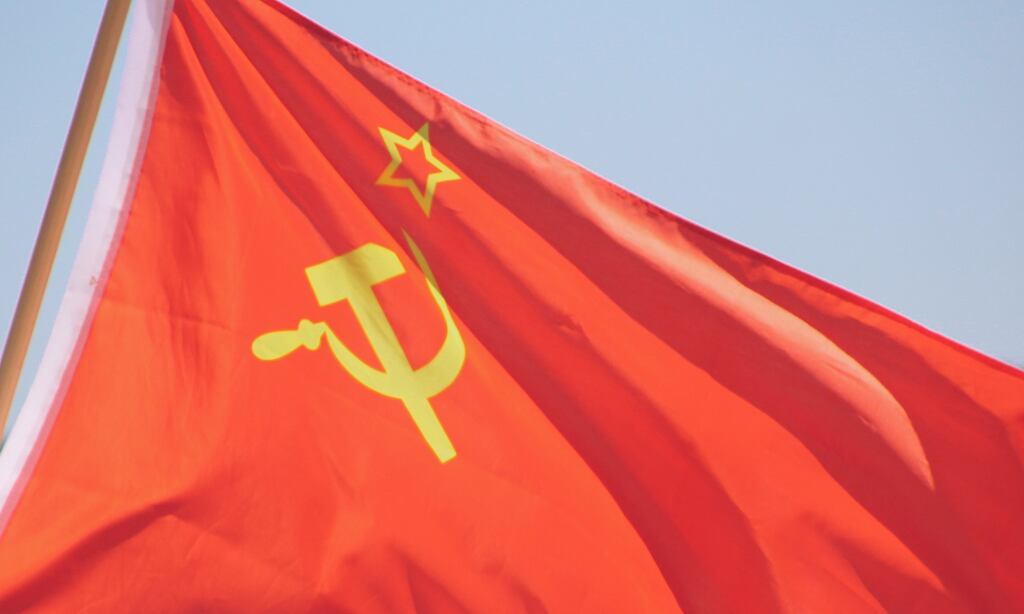Criticisms have been made of the size and purpose of the Russian embassy since the early 1970s when talks began on the establishment of diplomatic relations between Ireland and the Soviet Union. In particular, questions were asked about the ability of the Irish to keep tabs on the numerous Soviet spies who were expected to be active.
When Anglo-Soviet relations were frosty, the British were alarmed at the possibility of a Dublin embassy being used as a “back door” by their Cold War adversary and made their fears known to the taoiseach, Jack Lynch, in 1972. A Soviet diplomatic presence, as the Foreign Office put it delicately, “would be an unwelcome development” following the barring of 105 alleged Russian agents from Britain the previous year. The British prime minister, Ted Heath, outlined his concerns to Lynch, in a “secret and personal” message, and summed up what he saw as a joint security headache: “You and I have problems in common, which we are seeking to solve. The Soviet purpose will be to exacerbate these problems whenever and wherever they can.”
Heath’s timing was not good. The Bloody Sunday killings in Derry, four weeks earlier, badly strained Anglo-Irish relations. Paratroopers killed 13 people, and wounded another 13, one fatally, when they opened fire on civil rights marchers. IRA recruitment surged, and demonstrators set fire to the British embassy in Dublin. Lynch withdrew the Irish ambassador from London and dispatched his foreign affairs minister, Patrick Hillery, on a tour of Western capitals to appeal to international opinion over British policy in the North. The Soviets compared Bloody Sunday to the Sharpeville and My Lai massacres, in South Africa and Vietnam respectively – the Derry killings showed that Britain continued its “mailed fist” policy in Northern Ireland.
Heath sheepishly admitted that the situation contained an element of “closing the stable door”. Britain had had diplomatic relations with the Soviet Union for about 50 years, and its intelligence services had systematically targeted Britain. The British had been too indulgent about the accreditation of Russian diplomats and their immunities and travel restrictions; it would have been wiser to have taken a firm stand from the start.
Irish couple to stage six-hour-long Beckett play with no punctuation at Venice Biennale
Ronan McGreevy on the most damaging leak in Irish history
The strange case of Dr Achmet Borumborad and his Dublin-based Turkish baths
Firm friends: Finola Kennedy on a remarkable friendship between the founder of the Legion of Mary and former president WT Cosgrave
In addition, he warned, the Soviets had discussed sending arms to the Official IRA. Setting up an embassy would indicate Moscow had a serious interest in exploiting difficulties in Ireland. And at least half the Soviet Union’s staff in a Dublin embassy would be KGB agents. However, a lot had been learned in Britain about Russian techniques over the years, and, Heath suggested, if any assistance could be offered in “the technical fields” associated with the control of KGB activities, “you need only mention the matter” to the ambassador, John Peck, “and we will do what we can to help”.
Peck had some intelligence experience of his own, having worked with a British agency which provided carefully packaged propaganda for anti-Soviet publicity abroad, the Information Research Department.
One of its successes had been the publication of a Russian edition of George Orwell’s Animal Farm. Peck headed it up in the 1950s.
The American embassy in Dublin pointed out to Washington that Ireland – “a reliable neutral” – wanted to balance probable membership of the European Economic Community (EEC) with the development of at least limited ties with Soviet bloc states. And so the alarmist arguments of the British over opening a Russian embassy did not knock the Irish-Soviet negotiations off course. The two main political parties, Fianna Fáil and Fine Gael, held a bipartisan view that Ireland should have full diplomatic relations with the Soviet Union.
But there was some foot dragging, and a mixed metaphor, when Fine Gael’s foreign affairs spokesman, Richie Ryan, told his party in May 1972 that there was no need for “Mother Ireland to suckle the Russian bear”.
Diplomatic relations between Ireland and the Soviet Union were established in 1974, and embassies opened in Dublin and Moscow, accompanied by a lively correspondence in the newspapers. With horses, pigs and bears featuring in the dialogue since 1972, did someone in Moscow have the author of Animal Farm in mind when Orwell Road was chosen as the home for the Soviet embassy?
All classes of Irish society were invited to the party hosted by the Russian ambassador in a plush Dublin hotel in November 1974 to mark the Bolshevik revolution. Not only was there vodka – “the real stuff”, according to one journalist – but black, and white, caviar!
This Irish who’s who represented all shades of political opinion, ranging from the papal nuncio, Gaetano Alibrandi, on the right of the spectrum, to Peadar O’Donnell, on the left. O’Donnell, for one, appreciated the irony of this gathering of Ireland’s elites. With a twinkle in his eye, he remembered the very different, anti-imperialist, composition of the attendance in Dublin’s Mansion House in 1918 which celebrated the first anniversary of the Bolshevik revolution.
















